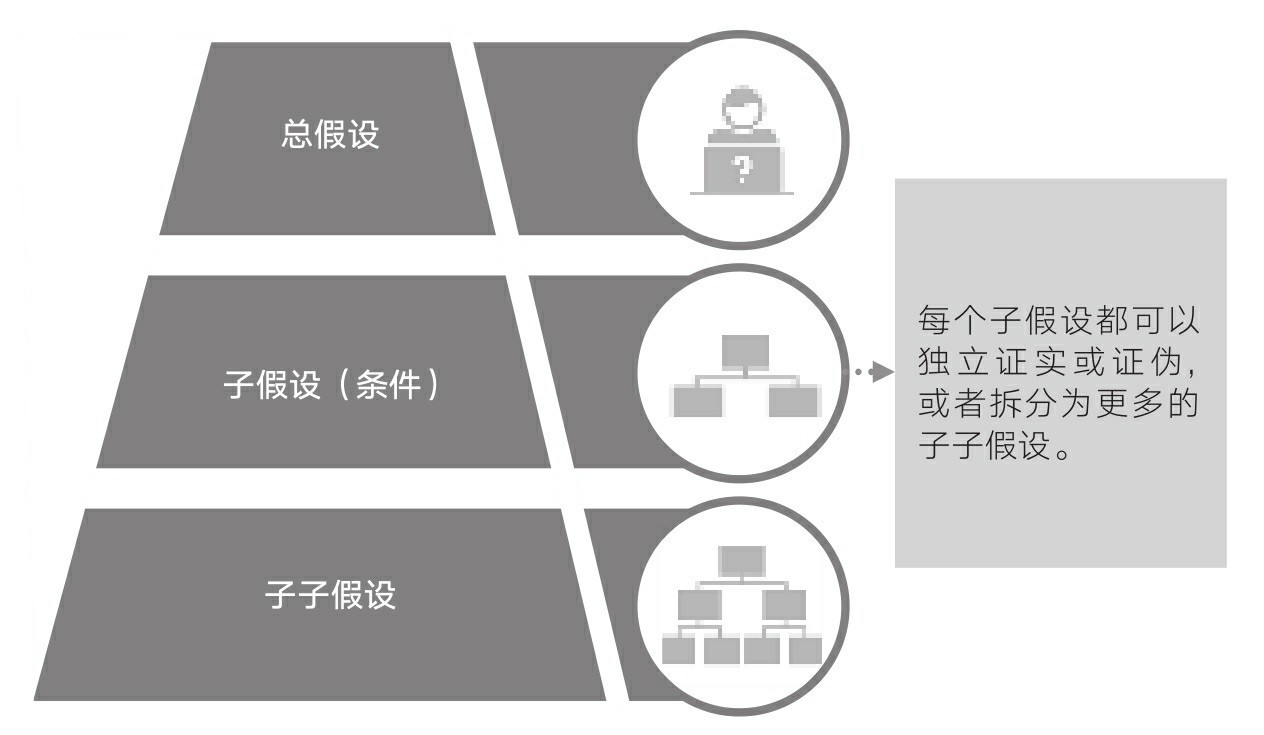【ZhaoWu notes sharing】
Using this line of thinking, we can think of a potential solution as a hypothesis, challenging it from all possible dimensions. Just because we have this idea does not mean that the idea is correct, and the meaning of the work we are going to do now is to verify the correctness of the idea. To do this, we need to build a pyramid of assumptions from top to bottom: take the existing ideas as the total hypothesis and split them into several sub-assumptions that make it possible. We may also need to split these sub-hypotheses again, listing secondary sub-hypotheses until all are specific enough to be corroborated or falsified by analysis, facts, and data (see Figure 4-1). When we have done all the analysis, we can climb up the pyramid again to the top and judge whether the general hypothesis is right or wrong, or to determine which aspects of the general hypothesis are right, which are wrong, and to what extent they are right and wrong.

Figure 4-1 assumes pyramids
If we have a team, the idea of building a hypothetical pyramid is to divide labor in the team, which is a very efficient way of analyzing. This chapter focuses only on how to build a hypothetical pyramid, and we will discuss how to collect data and analyze it in Chapter 6.
Librinova's case can help us see this idea. We can build the problem around the solution that the CEO is considering: Librinova should partner with The Marquis to launch a sister platform in Canada. This alternative solution is the total hypothesis at the top of the pyramid (see Figure 4-2), so what are the conditions for making it valid?
Figure 4-2 The Librinova case assumes the sub-hypothesis of the pyramid
This hypothesis includes three sub-assumptions: the choice of country (Canada), the choice of pioneering model (building partnerships with local companies and creating sister platforms rather than going it alone or making acquisitions), and the choice of partners (Marquis Company and not other companies). We must test whether these three assumptions are correct: Canada must be an attractive market; cooperation on sister platforms must be the best entry model; and Marquis must be a good partner. Otherwise, Librinova should reconsider the feasibility of this general hypothesis and look at other countries, other pioneering models, other partners. If the total hypothesis is to hold, then all three must be true.